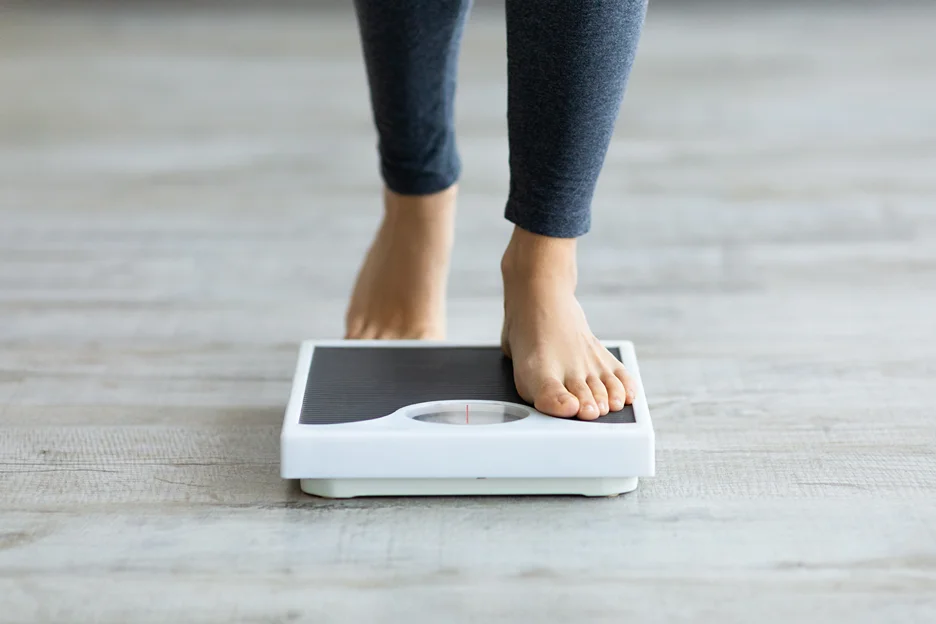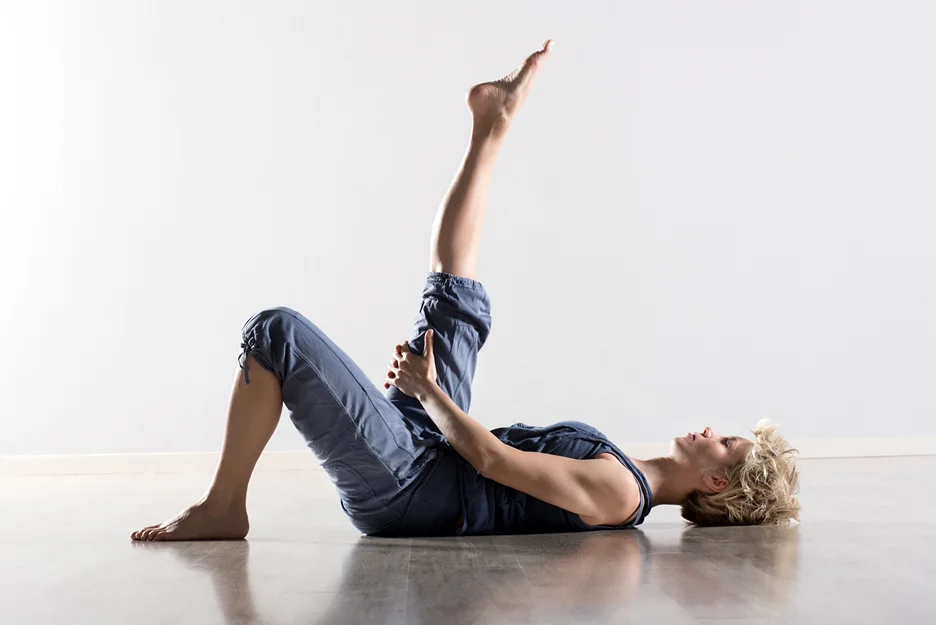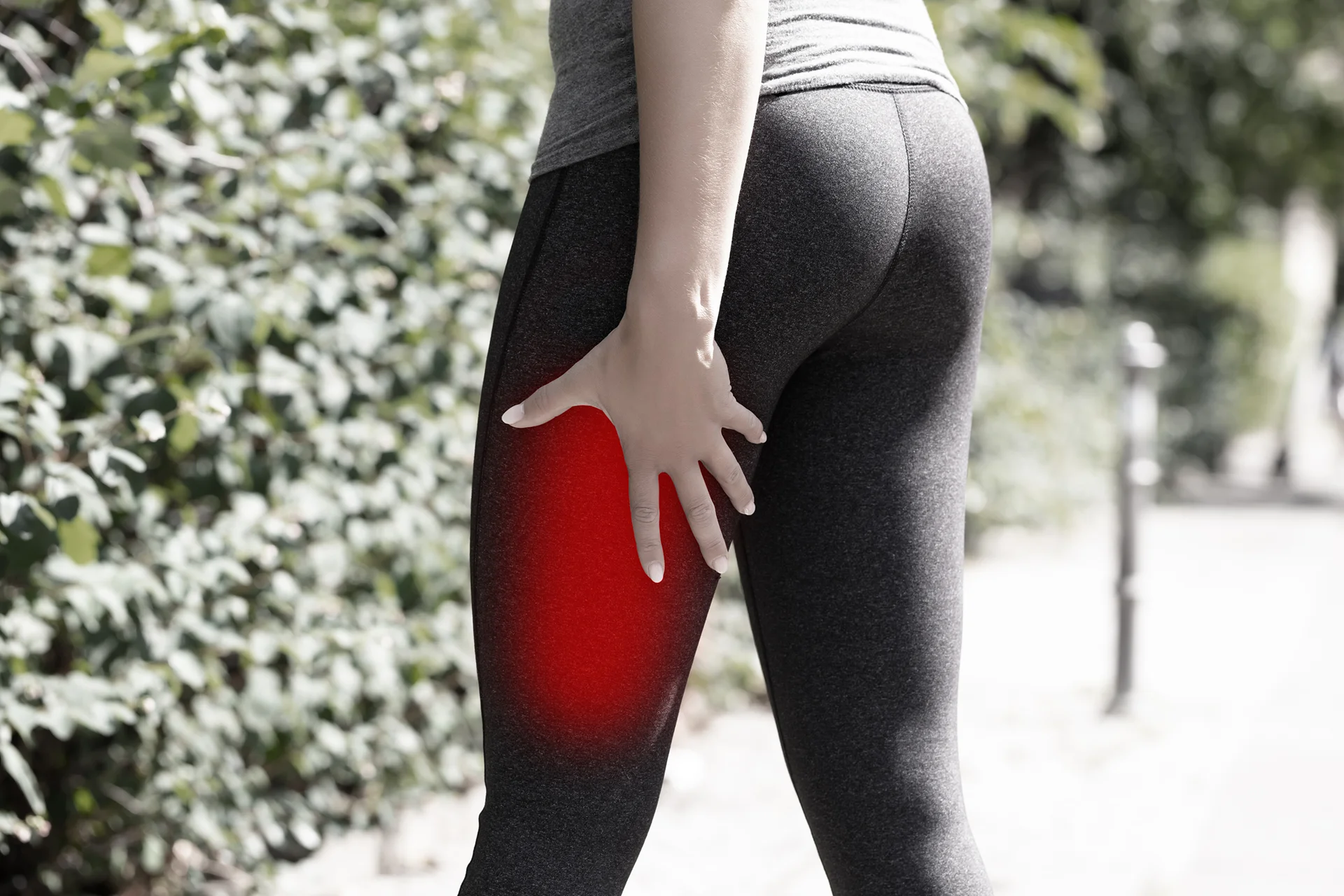Sciatica is a painfully common condition, with symptoms that can disrupt your daily life. If you’ve experienced a sharp, shooting pain from your lower back into your legs, you’re likely familiar with sciatica. This pain occurs when the sciatic nerve becomes compressed or irritated.
At Kaly, we understand how debilitating sciatica can be. Our team of back pain experts is dedicated to providing you with the knowledge and support you need to find relief. In this post, we’ll cover everything you need to know about sciatica, especially that agonizing hamstring pain it often causes.
You’ll learn what triggers flare-ups, how to differentiate sciatica from other conditions, and most importantly, techniques to ease your discomfort. Arm yourself with information from our sciatica specialists. You don’t need to suffer through this alone – we’re here to help you on the road to recovery.
Why Does Sciatica Cause Hamstring Pain?

One of the most frustrating sciatica symptoms is pain and tightness in the back of your thigh – your hamstring muscle. This occurs because the sciatic nerve runs through your hamstring as it extends down your leg.
When the nerve gets compressed in your lower spine, it can radiate pain along its entire path, including your hamstring. You may feel anything from mild aches to debilitating muscle cramps.
Bending, stretching, or putting pressure on your hamstring muscle can aggravate your sciatica pain.
That’s why even simple activities like climbing stairs or driving can become excruciating.
What Are The Primary Symptoms Of Sciatica Hamstring Pain?
The hallmark symptom of sciatica is pain that radiates from your lower back, through your buttocks, and down the back of your thigh into your hamstring. It often affects just one side of your body. You may feel anything from mild aches to sharp, burning, tingling, or shooting pains.
In addition to pain, you may experience numbness or muscle weakness in your hamstring that can make it difficult to flex your knee, lift your leg, or point your toes. The pain may be worse when sitting, coughing, sneezing, or straining.
Distinguishing Sciatica from Other Causes of Hamstring Pain
Not all hamstring discomfort is caused by sciatica. Strains and pulls are common hamstring injuries. So how do you know if your hamstring pain is linked to sciatica?
Here are a few telltale differences:
- Sciatic pain radiates down from your buttocks. A hamstring injury usually causes pain concentrated in the hamstring muscle.
- Sciatica pain may come and go. Hamstring strains cause prolonged discomfort.
- Sciatica can cause numbness and tingling. Strains don’t have these nerve symptoms.
- Sciatic pain is made worse by sitting. Hamstring strains often hurt more when you move your leg.
If you suspect sciatica is behind your hamstring pain, it’s important to seek medical advice. Your doctor can provide a diagnosis and rule out other potential causes.
What Lifestyle Changes Can Help Prevent Sciatica From Affecting Hamstring Muscles?

Making certain lifestyle adjustments can take pressure off your sciatic nerve and keep hamstring symptoms at bay:
- Maintain a healthy weight to avoid extra strain on your back.
- Practice good posture when sitting and standing.
- Limit sitting durations and take regular movement breaks.
- Avoid high-impact activities that jar the spine, like running on hard surfaces.
- Wear supportive footwear with cushioned arch support.
- Sleep on your side with a pillow between your knees to keep your spine aligned.
- Manage stress through relaxation practices like yoga, deep breathing, or meditation.
- Stop smoking, as this impedes nerve function.
- Seek treatment for any underlying conditions contributing to sciatica, like spinal arthritis or disc disease.
What Stretches Are Recommended For Relieving Sciatica-related Hamstring Pain?
Gentle stretches can bring relief by relaxing the muscles pressing on your sciatic nerve and increasing blood flow. Here are some easy sciatica hamstring stretches to try:
| Stretch | Instructions |
| Lying hamstring stretch | Lie on your back, bend one knee, and loop a strap around your foot. Gently straighten your leg until you feel a mild stretch in the back of your thigh. Hold for 30 seconds. Repeat on the other leg. |
| Seated hamstring stretch | Sit up tall with both legs extended. Lean forward, hinge at your hips, and reach for your toes until you feel a gentle stretch in your hamstrings. Hold for 30 seconds. |
| Supine twist | Lie on your back with knees bent and feet on the floor. Let both knees fall to one side. Turn your head in the opposite direction. Hold for 30 seconds. Repeat on the other side. |
Always listen to your body and stop any stretch that causes new or worsening pain. Stretching should feel good!
How Does A Hamstring Sciatica Stretch Differ From Regular Hamstring Stretches?

The main difference lies in stretch intensity. Standard hamstring stretches are held longer and take the muscle deeper into its range of motion.
Sciatica stretches should be gentle and only held to the point of mild tension. The goal is not to aggressively “release” hamstring tightness, but rather to relax the surrounding muscles just enough to take pressure off the irritated sciatic nerve.
It’s also ideal to add a spinal twist, which mobilizes the lower back and further decompresses the nerve roots. This is why exercises like a supine hamstring twist provide more sciatica relief than traditional forward folds.
What Role Does Posture Play In Developing Sciatica Hamstring Pain?
Posture significantly impacts sciatica risk. Slouching, hunching over, or standing with swayed hips can misalign the spine, narrow the spaces around nerve roots, and increase compression on the sciatic nerve.
Prolonged sitting with poor posture is one of the most common posture mistakes that contributes to sciatica and radiating hamstring pain. The flexed hip position shortens the hamstrings and puts extra strain on the nerve.
Making conscious efforts to improve your posture – sitting tall, keeping your core engaged, and taking regular breaks from sitting – can prevent and treat sciatica-related hamstring pain. Physical therapy can also help retrain optimal posture habits.
What Are The Best Sleeping Positions For Managing Sciatica Hamstring Pain?
Finding a comfortable sleeping position when you have sciatica can be challenging, but these tips may help relieve nighttime hamstring pain:
- Sleep on your side in the fetal position with a pillow between your knees. This keeps your spine neutrally aligned and avoids pressure points.
- If you sleep on your back, place pillows under your knees to take pressure off your hamstrings.
- Avoid sleeping on your stomach, as this twists the lower spine and strains muscles.
- Use a firm mattress that supports spine alignment and doesn’t let your hips sink in.
- Try laying a pillow under the side of your body that’s affected to prop up your leg.
- A long body pillow is another option to maintain proper leg, hip and spine positioning.
Finding Relief from Sciatica and Hamstring Pain

We hope this guide has helped shed some light on managing sciatica hamstring pain and given you hope that relief is possible.
At Kaly, we believe that with the right information, treatment, and support network, you can overcome chronic back pain. You have the power to drastically improve your quality of life – and we’re here to help you realize it. Our doors are always open to anyone seeking empowerment on their journey toward a pain-free future.
